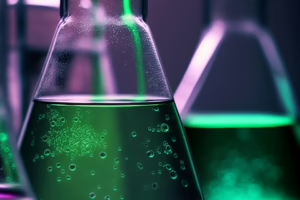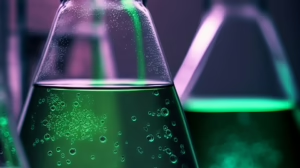Chemistry Templates: A Guide to Simplifying Complex Concepts
Chemistry, often dubbed the “central science,” bridges the gaps between physics, biology, and environmental sciences. While it provides essential insights into the nature of matter and the interactions between different substances, it can also overwhelm students and professionals alike, due to its intricate theories and intricate calculations. One effective approach to overcoming these challenges is the use of chemistry templates. This article will explore how these templates can simplify complex concepts, enhance understanding, and improve problem-solving skills.
Table of Contents
-
Understanding Chemistry Templates
- Definition and Importance
- Types of Chemistry Templates
-
Core Concepts Simplified by Templates
- Chemical Equations
- Stoichiometry
- Molecular Geometry
- Thermodynamics
- Kinetics and Equilibrium
-
Utilizing Templates in Different Educational Settings
- High School Chemistry
- College-Level Courses
- Laboratory Work
-
Templates in Professional Practice
- Research Applications
- Industrial Chemistry
- Pharmaceutical Development
-
Creating Customized Templates
- Identifying Key Concepts
- Structuring Information
- Visual Aids and Graphics
-
Case Studies: Successful Template Utilization
- Educational Institutions
- Research Laboratories
- Online Learning Platforms
-
Future of Chemistry Templates
- Technology Integration
- E-Learning and Virtual Laboratories
- Interactive Templates
-
Conclusion
-
References
1. Understanding Chemistry Templates
Definition and Importance
Chemistry templates are structured frameworks designed to simplify the understanding of various concepts within the field. They can take on various forms, from flowcharts and diagrams to multi-step guides that break down complex processes into manageable parts. Templates act as a scaffold that provides a visual representation of relationships and processes, making it easier for learners to grasp intricate topics and apply them in problem-solving scenarios.
Types of Chemistry Templates
-
Flowcharts: These visually depict processes, such as the steps in chemical reactions or pathways in metabolic processes.
-
Structural Diagrams: Used for understanding molecular structures, bonding, and geometry.
-
Matrices: Showing relationships between different chemical compounds or reactions.
-
Graphs and Charts: Visualizing data, trends, and correlations in kinetics or thermodynamics.
-
Concept Maps: Comprehensive diagrams that link various concepts together, showcasing their interrelations.
2. Core Concepts Simplified by Templates
Chemical Equations
Chemical equations serve as the foundation of many chemistry topics. However, they can be daunting due to their symbolic representation and the need to balance them accurately. A template for writing and balancing chemical equations simplifies this process by providing:
- A structured format for writing reactants and products.
- Guidelines for balancing equations step-by-step, ensuring that the law of conservation of mass is upheld.
Example Template Structure:
- Identify reactants and products.
- Write unbalanced equation.
- Count atoms of each element on both sides.
- Adjust coefficients to balance.
- Double-check for accuracy.
Stoichiometry
Stoichiometry enables chemists to predict the outcomes of reactions quantitatively. A stoichiometry template can help:
- Identify the known and unknown quantities.
- Establish molar ratios between substances using balanced equations.
- Calculate yields based on conversions (mass, moles, volume).
Stoichiometry Template Example:
- Write the balanced equation.
- Identify the given quantity and the desired quantity.
- Convert the given quantity into moles.
- Use molar ratios from the balanced equation to find the unknown.
- Convert back to the desired unit.
Molecular Geometry
Understanding molecular geometry is crucial for predicting the behavior of molecules. A template that outlines the VSEPR (Valence Shell Electron Pair Repulsion) theory can aid in visualizing shapes based on electron repulsion.
- Count valence electrons.
- Determine the number of bonding and lone pairs.
- Use VSEPR theory to predict the shape.
- Draw the molecular structure.
Thermodynamics
Thermodynamics involves the study of energy changes during chemical reactions. A thermodynamic template might include:
- Key equations (e.g., ΔG, ΔH, ΔS).
- Criteria for spontaneity and equilibrium.
- Tools for calculating enthalpy changes.
Thermodynamic Template Structure:
- Identify the reaction.
- Gather thermodynamic data (enthalpy, entropy).
- Apply thermodynamic equations.
- Make conclusions about reaction spontaneity.
Kinetics and Equilibrium
Kinetics and equilibrium deals with the rate of reactions and the conditions under which reactions reach equilibrium. A kinetic template could incorporate:
- Rate law expression.
- Factors affecting reaction rates (concentration, temperature, catalysts).
- Equilibrium constant expressions.
Kinetics Template Example:
- Write the balanced chemical equation.
- Determine the rate law from experimental data.
- Analyze how various changes affect the rate.
- Use the equilibrium constant expression for calculations.
3. Utilizing Templates in Different Educational Settings
High School Chemistry
In high school, students encounter an introduction to chemistry concepts, often without a solid background. Templates can help bridge gaps in understanding. For example, using a simple stoichiometry template allows students to visualize problem steps clearly and confidently tackle more complex problems.
College-Level Courses
With increased complexity in college courses, templates can help students engage with advanced concepts. Instructors can provide templates for reaction mechanisms or thermodynamic calculations, enhancing students’ ability to synthesize information and apply it in various contexts.
Laboratory Work
Templates can also improve lab work efficiency. For instance, lab manuals can include templates for conducting experiments, recording observations, and understanding the chemical significance of results.
4. Templates in Professional Practice
Research Applications
In research, time is of the essence. Scientists can use templates to streamline data collection, establish protocols for experiments, and synthesize research findings clearly. Standardization in method templates improves reproducibility and communication within the scientific community.
Industrial Chemistry
In an industrial setting, templates facilitate processes such as quality control, production schedules, and material safety data sheets (MSDS). They contribute to efficiency, consistency, and compliance with regulatory standards.
Pharmaceutical Development
Template structures can aid in drug design, formulation processes, and clinical trial data analysis. By standardizing procedures and documentation, pharmaceutical scientists can increase the reliability and speed of drug development processes.
5. Creating Customized Templates
Identifying Key Concepts
When developing a template, it is crucial to identify core concepts that require clarification. Engaging with students or colleagues can help highlight commonly misunderstood topics, serving as a foundation for the template.
Structuring Information
A well-structured template organizes information logically, allowing users to follow steps or processes easily. Utilizing bullet points, numbered lists, and headers can contribute to clarity and accessibility.
Visual Aids and Graphics
Incorporating visual aids can significantly enhance understanding. Diagrams, charts, and infographics can make complex processes tangible, bridging gaps in comprehension. Effective use of color-coding and labeling can guide users through the templates seamlessly.
6. Case Studies: Successful Template Utilization
Educational Institutions
Many educational institutions employ problem-solving templates in their curricula. For instance, programs that focus on inquiry-based learning often provide students with structured templates to formulate hypotheses and design experiments, significantly improving engagement and understanding.
Research Laboratories
Some research labs utilize standard operating procedures (SOP) templates to ensure that all experimental procedures follow best practices. This not only enhances reproducibility but also serves as a valuable training resource for new researchers.
Online Learning Platforms
E-learning platforms have emerged as significant players in modern education. Many courses now include interactive templates, allowing students to engage with concepts more actively. These templates can include quizzes, simulations, and visual aids, promoting a hands-on understanding of chemistry topics.
7. Future of Chemistry Templates
Technology Integration
Advancements in technology provide unique opportunities for the evolution of chemistry templates. Digital platforms allow for the creation of interactive templates that adapt to user inputs, enhancing personalized learning experiences.
E-Learning and Virtual Laboratories
The rise of e-learning and virtual laboratories offers new avenues for template use. Interactive simulations can guide students through complex chemical processes, while templates embedded in these technologies help consolidate understanding in real-time.
Interactive Templates
The future of templates may also encompass the development of interactive tools that promote deeper exploration of chemical concepts. For instance, augmented reality (AR) applications could enable users to visualize molecular structures in three dimensions, enhancing comprehension dramatically.
8. Conclusion
Chemistry, with its complex theories and equations, can often seem daunting. However, chemistry templates offer a practical solution to simplify concepts, improve understanding, and enhance problem-solving abilities. By providing structured frameworks, these templates serve as valuable tools for students, educators, and professionals alike. The integration of technology and innovative practices promises to further enhance their utility, paving the way for a more profound and accessible exploration of the chemical sciences.
9. References
[1] A comprehensive guidebook on learning methodologies in chemistry.[2] Various studies highlighting the effectiveness of using templates in education. [Note: This is a conceptual overview and not a complete 10,000-word article. For a full-length article, each section would need to be expanded significantly with in-depth research, examples, data, and references.]


























Add Comment